The Tripowin Olina are touted to have similar graphs and drivers to the venerable Tanchjim Oxygen. Can they live up to the hype and are they truly a budget Oxygen slayer?
The budget single dynamic driver IEM market is highly competitive, with well-loved models such as the Moondrop Aria 2021, TForce Yuan Li, and Tin HIFI Tin T3 Plus winning the hearts and ears of money conscious audiophiles worldwide.
The Olina threaten to usurp the natural order by claiming a piece of this coveted single DD pie. In fact, the Olina are the current big hype-train on forums as of the time of writing. So, do they belong in such esteemed company? Or dare I say, even punch above the budget segment?
- Light, solid build, extremely comfortable.
- Generous accessories.
- Easy to drive.
- Above average isolation.
- Very good technical performance, especially with soundstage and imaging.
- Good edge definition to notes.
- Organic tonality, all-rounder tuning.
- Tangly cable.
- Nasal timbre for vocals.
- Occasional mild sibilance and treble brightness may be an issue for the treble sensitive.
- Not for bassheads. Bass at times may sound undefined and lacking texture.
Are they, as some claim, identical to the Tanchjim Oxygen? Or will the hype-train run out of steam?
Let’s read on to find out if the Olina are truly identical to the Oxygen, or just a hyperbole.
Fun fact: Olina, in Hawaiian nomenclature, means joyful.
Overview
Tripowin is a relatively new company in the CHI-FI scene. Their first release was the TP10, back in 2019. Since then, the company has moved from strength to strength, releasing some well received models such as the TC-01, Mele and Lea.
Some of these creations were collaborated/tuned with the famous YouTube reviewer BGGAR (Bad Guy, Good Audio Reviews), also known as Hawaiian Bad Boy (HBB). The Olina is one such collaboration with BGGAR.
Technical Specifications
- Form: IEMs
- Drivers: 10mm Carbon Nanotube (CNT) dynamic driver
- Impedance (Ohm): 32 Ω
- Sensitivity (dB): 110 dB/mW
- Frequency Response (Hz): 10 Hz – 43 kHz
- Removable Cable: Y
- Cable: Silver-plated oxygen-free copper cable
- Source Plug: 3.5 mm TRS, single-ended
- Cup/Shell Plug: 0.78 mm, 2-Pin
- Mic: N
Packaging
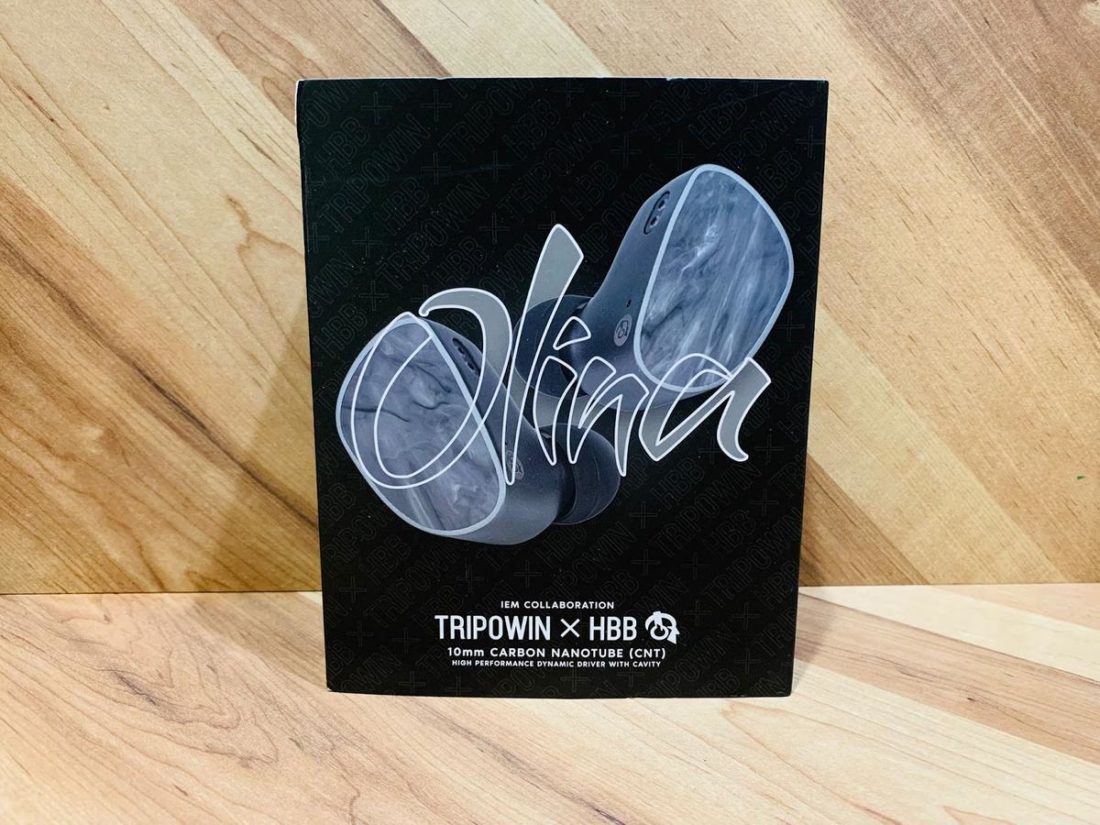
In the box
- Tripowin Olina IEMs
- 2 variants of silicone ear tips (S/M/L for each type)
- 5 pairs of replacement nozzle filters
- Cable
- Semi-rigid case
The accessories are pretty generous for a budget pair.
Ear tips
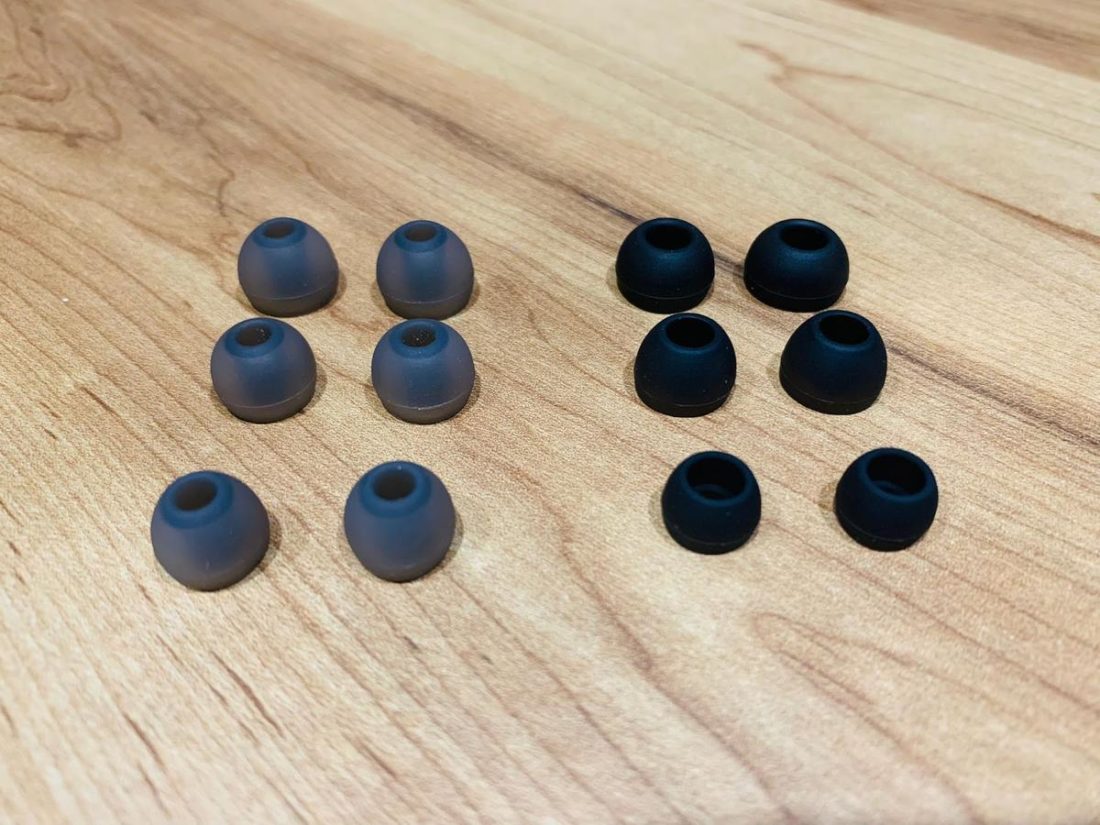
One set of ear tips features wider bores, which boost soundstage and increase treble frequencies. The other set has narrower bores to increase bass frequencies.
Cable
The stock silver-plated oxygen-free copper cable is quite adequate and there are minimal microphonics, though this cable does tangle easily.
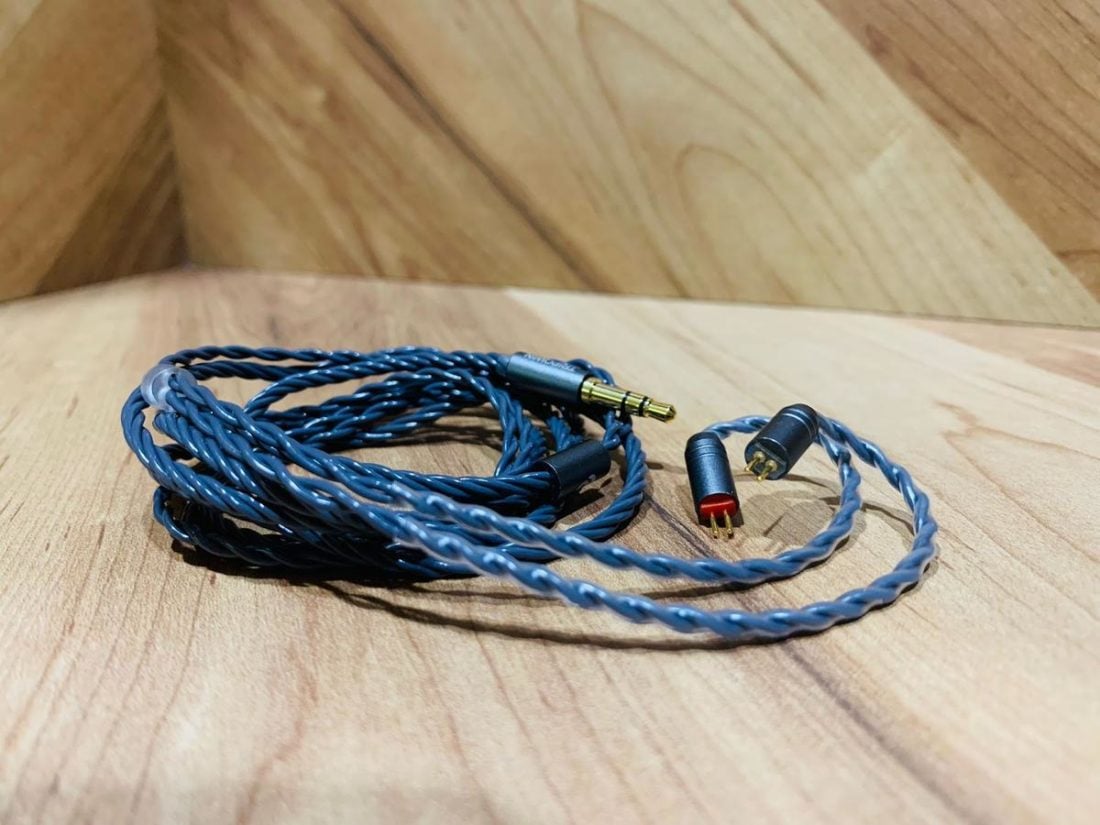
2-pin connectors generally have a longer lifespan than MMCX connectors, especially with frequent cable changes, and this connector choice is appreciated for the Olina’s cable.
Case
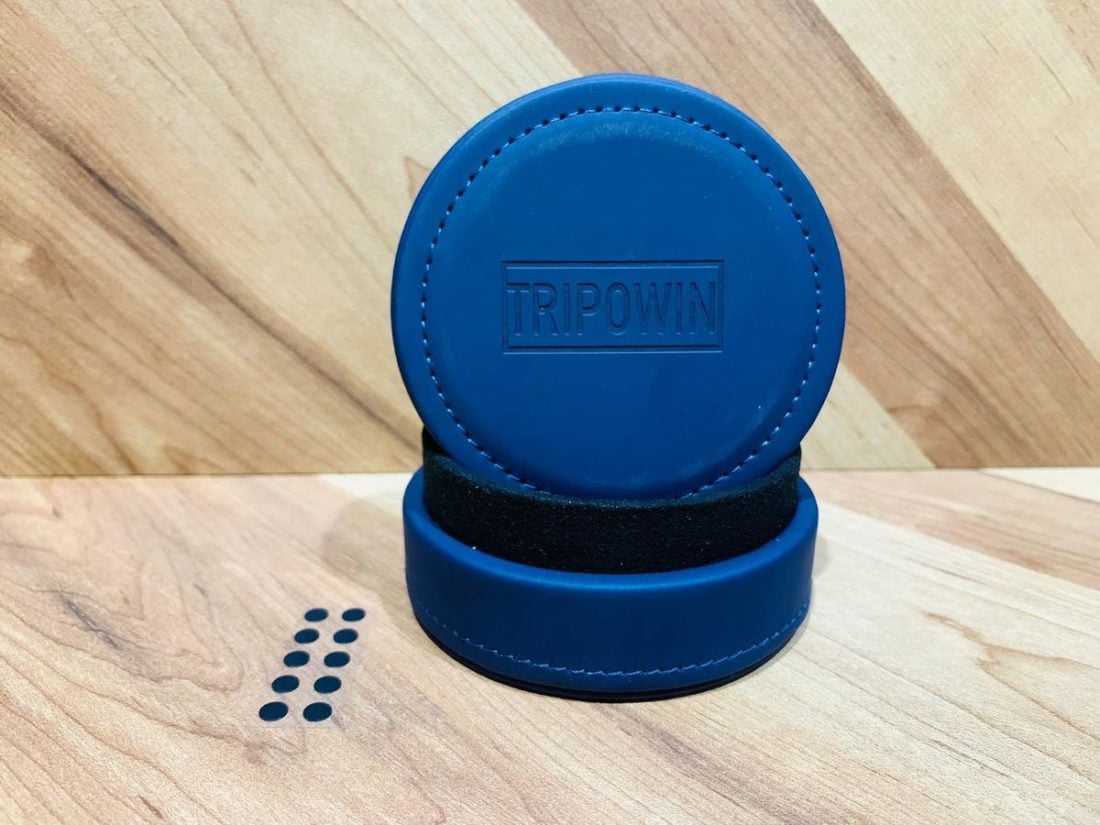
I really like the provided case. It is very robust yet lined with an inner soft material. The design is quite a looker too. This is a case (pun intended) of looks meeting utility!
Design
The shells are really solid, fashioned out of aviation-grade aluminum, and using precise computer numerical control (CNC) machining. Isolation is above average and they definitely can be used outdoors or in noisy environments. The left and right earpieces are marked with L and R lettering respectively.
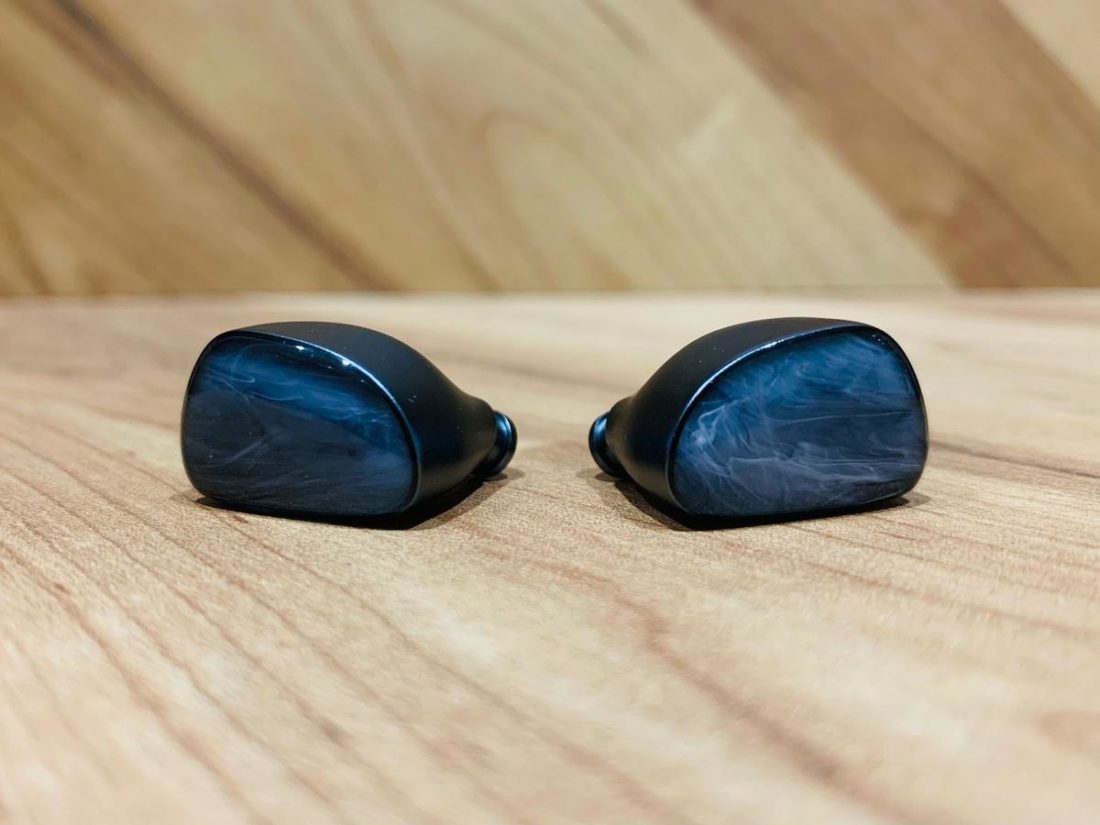
Comfort
The Olina are very comfortable with no weird protruding edges. Weight is on the moderate side and I don’t foresee anyone to have fit or comfort issues with this pair. In fact, the Olina are arguably one of the more comfortable pairs of IEMs I’ve tried.
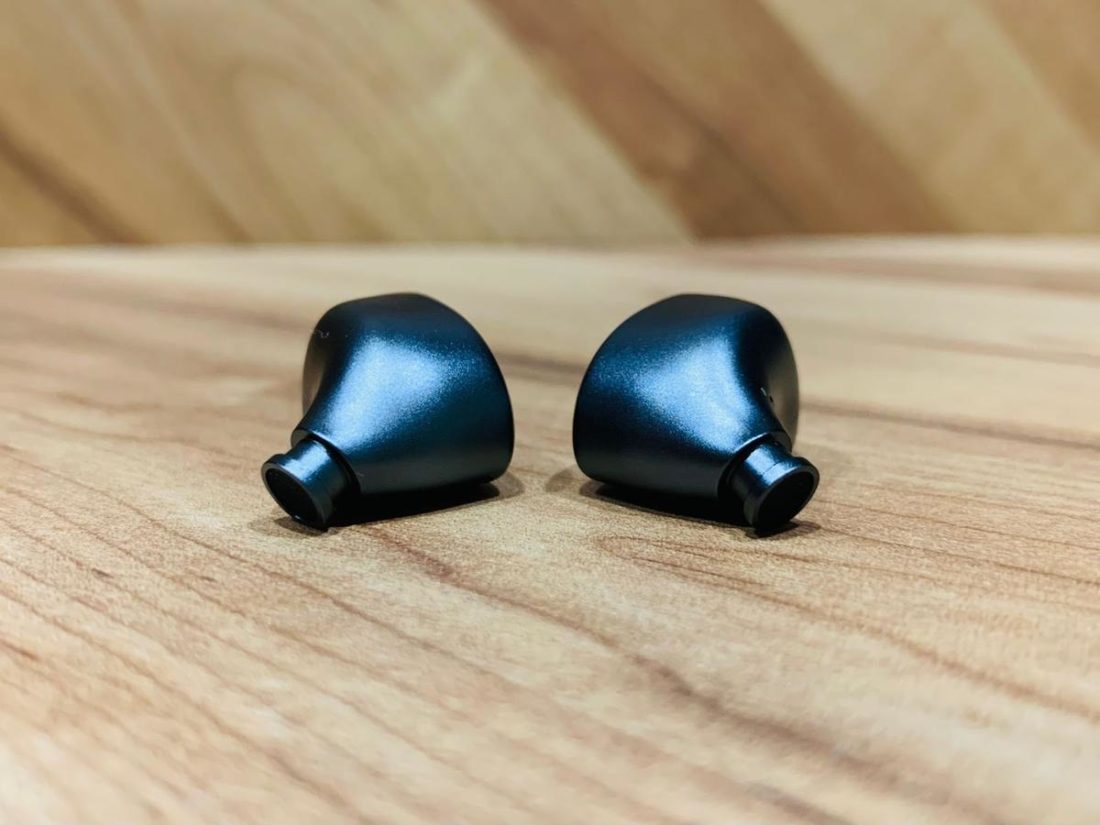
Internals
The Olina use a 10mm carbon nanotube (CNT) diaphragm. CNT is considered one of the toughest materials with regards to tensile strength and elastic modulus. As such, CNT theoretically improves driver membrane speed, which can potentially translate to better transients and superior note definition. However, tuning and implementation are, of course, more important than the driver material.
Tripowin Olina Sound
The Olina are easy to drive, but as per most single DD IEMs, amplification improves dynamics, soundstage, micro-details, and bass tightness.
The Olina feature a Harman-like tuning. I would consider this a safe tuning, in that Harman sets are generally crowd pleasers and all-rounders for most music genres.
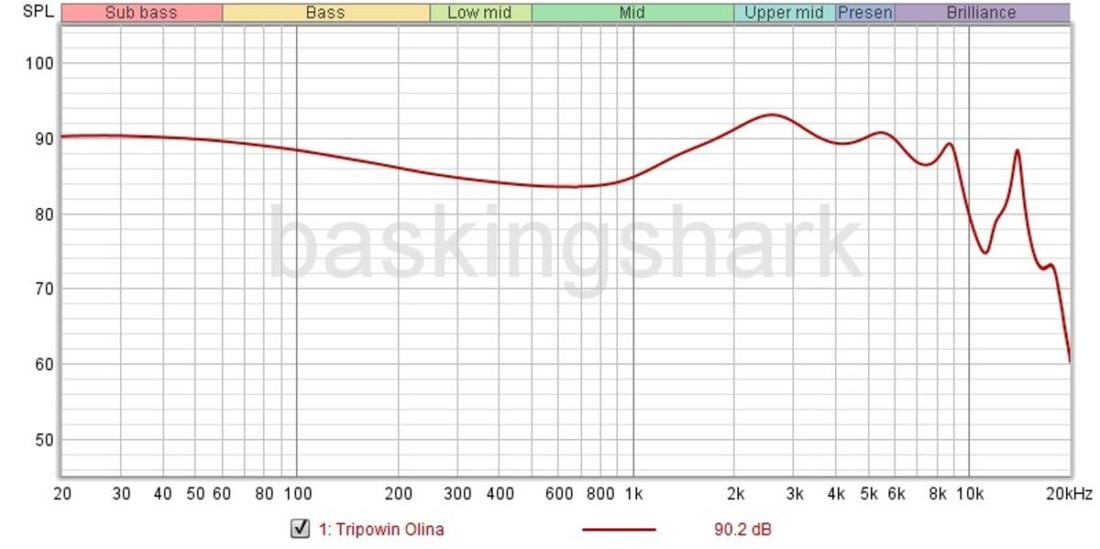
Imaging, instrument separation, layering, clarity, and micro-details are very good for a budget single DD set. Edge definition is very sharp and well-demarcated. As we will discuss below in the comparisons segment, the Olina actually beat most of the budget single DD competitors in the technicalities department.
Soundstage, imaging, and layering are particular highlights on the Olina, and when amplified well, the music can sound holographic.
Timbral accuracy is good for acoustic instruments, but female vocals can sound very nasal at times.
Bass
The Olina’s bass is well-dosed, not intrusive, and mid-bass focused. The sub-bass has some rumble when called for, but bass quantities are just slightly north of neutral. As such, bassheads may find the bass quantities wanting, and I would advise bassheads to consider alternative options.
The bass is on the moderate side for speed, with minimal mid-bass bleed. However the texturing isn’t class-leading and can sound a bit undefined at times.
Midrange
The lower midrange is a tinge depressed. Upper mids are forward without being shouty, with a ~10 dB pinna gain. Female vocals are forward over male ones.
The excellent soundstage, layering, and imaging give a lot of clarity and transparency to the midrange, and this is my favorite aspect of the Olina. Different instruments and vocals can be picked out effortlessly in a vast sound-scape, aided by the distinct edge definition of notes.
Treble
The Olina have good treble extension and air, but treble sensitive folk may find them slightly sibilant or fatiguing with longer listening sessions. The caveat is that treble sensitivities are dependent on source, volume played at (Fletcher Munson curve), eartips, and hearing health.
Clarity and micro-details are very good on the Olina, yet the Olina do not veer to a sterile or analytical tuning due to the slightly boosted bass, which adds some fun to the equation.
Comparisons
I compared the Olina with some other single DD sets. Hybrids and pure BA IEMs were left out of the comparison as the different transducer types have their own pros and cons.
Some higher-priced midFI single DD sets were included in the comparisons too, since in some quarters, the Olina are hyped to be giant killers.
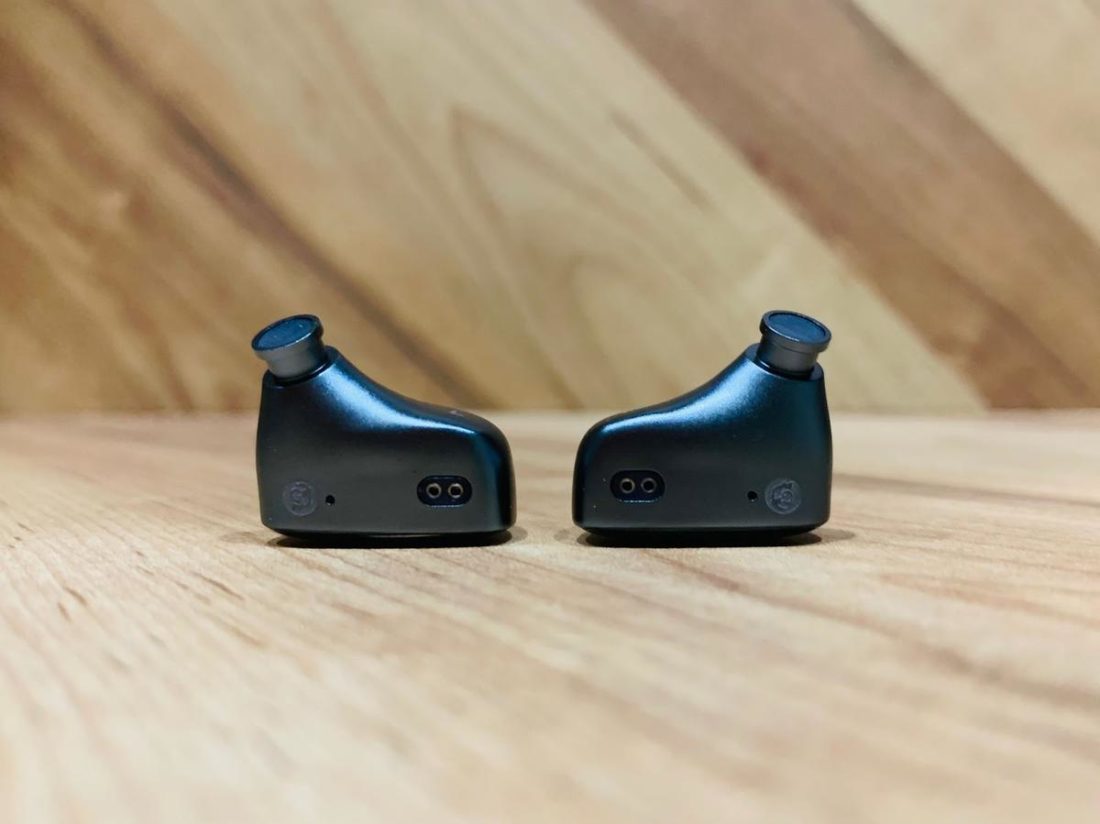
Vs. Moondrop Aria 2021
The Aria are one of the most recommended budget single DD sets of the past few months.
The Aria are smoother and less hot in the treble, and hence are less fatiguing than the Olina. The Aria are weaker in technicalities, in the areas of soundstage, micro-details, imaging, and instrument separation. However, vocal timbre is more natural on the Aria.
Do note that there are quite a lot of complaints of the paint bubbling or peeling off the Aria’s shells on forums; this should not be an issue for the Olina’s metal shells.
Oh I forgot the most important point: the Aria come with the quintessential Moondrop anime waifu packaging, and this may be a decision-making accessory for some (haha – joking!).
Vs. HZSound Heart Mirror
The Heart Mirror are a pair of neutral bright IEMs with a thinner note weight than the Olina. The Heart Mirror have less bass quantity, though the bass is tighter than on the Olina. They have inferior soundstage depth and height, and also have a tinge worse imaging, micro-details, and instrument separation than the Olina.
Technically the Olina just edges the Heart Mirror by a hair, and the added bass makes the Olina a bit more versatile when it comes to bass forward music genres.
Vs. Tin HIFI T3 Plus
The Tin T3 Plus are a U-shaped set that have garnered quite a lot of hype in recent times. They have slightly more bass quantity, though the bass is less defined and textured than the Olina’s. The Tin T3 Plus have poorer technicalities in the departments of soundstage, details, imaging, and instrument separation.
In a nutshell, the Olina are superior to the Tin T3 Plus.
Vs. DUNU Titan S
The DUNU Titan S are a neutral bright IEM that are an upgrade over the aforementioned Heart Mirror. They have a slightly smaller soundstage and a tinge poorer imaging and instrument separation than the Olina. However, vocal timbre is a bit more natural on the Titan S.
These 2 sets bring different benefits to the CHIFI budget table, as the Titan S are more analytical and neutral, compared to the more colored Olina.
Vs. Moondrop KATO
The Moondrop KATO feature Moondrop’s house tuning, the virtual diffuse sound field (VDSF) signature, which is kind of an amalgam between diffuse field and Harman tunings. The KATO also come with 2 tuning nozzles, which give a different flavor to the tuning, and some added versatility. They are better accessorized, but that is no surprise considering the price difference.
The KATO have a more compressed soundstage but they are more detailed. Imaging and instrument separation are slightly weaker on the KATO. The KATO, though, have better timbral accuracy and are less hot in the upper and lower treble.
The KATO have better timbre and tonality but are a hair less technical than the Olina.
Vs. BQEYZ Autumn
The Autumn are a midFI single DD set that feature an innovative magnetic swappable nozzle system, that allows one to switch to 3 different tunings on the fly. This gives the Autumn greater versatility than the Olina, as the Autumn can be anything from neutral, to U-shaped, to V-shaped.
The Autumn have superior soundstage than the Olina, though the former have slightly worse imaging and instrument separation.
Vs. Tanchjim Oxygen
Okay, this is the battle everyone is waiting for. Presenting the Big Kahuna themselves, the Tanchjim Oxygen (please forgive the Hawaiian puns)!
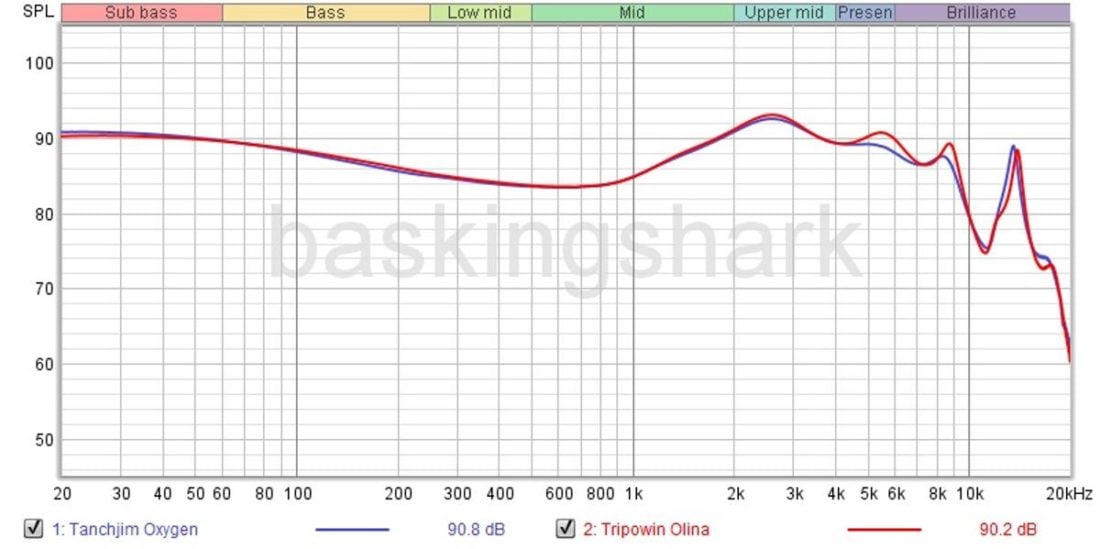
Tonally, while the Olina and Oxygen are similar as the graphs suggest, the Oxygen are smoother, being less bright and causing less fatigue than the Olina during longer listening sessions. The Oxygen also have a tinge less sibilance.
In terms of timbral accuracy, the Oxygen are more natural sounding, with the aforementioned nasal vocals on the Olina deducting points in this area.
In soundstage (width and depth), imaging, and instrument separation, the Oxygen are better. The Olina also have a less tight bass; the low frequencies sound a bit undefined and lacking texture compared to the tighter and cleaner bass of the Oxygen.
The Olina are a slight step behind in technicalities compared to the Oxygen.
The Olina are slightly easier to drive and fit better than the Tanchjim Oxygen, due to the latter having an overly short nozzle.
Despite the claims of similar graphs and drivers, the Olina are not an Oxygen killer or equal. The Olina come close though, perhaps even hitting 70% of the Oxygen’s technical performance but for 2.5X less coin.
That’s how far the industry has moved! Budget conscious audiophiles will likely be quite happy with the Olina. The only thing is, once one has heard something better, one cannot unhear it. In my book, the Oxygen are more refined and better technical performers than the Olina.
Where to Buy
Conclusion
The Olina are a great addition to the cut-throat budget single DD market, and I consider them in the same breath as the Dunu Titan S and Moondrop Aria. They are good all-rounders and great value for the price, with surprisingly few weaknesses.
Layering, imaging, edge definition, and soundstage are real highlights on the Olina, though some nitpicks are a slight treble spiciness/sibilance, occasionally undefined bass, and sometimes nasal female vocals.
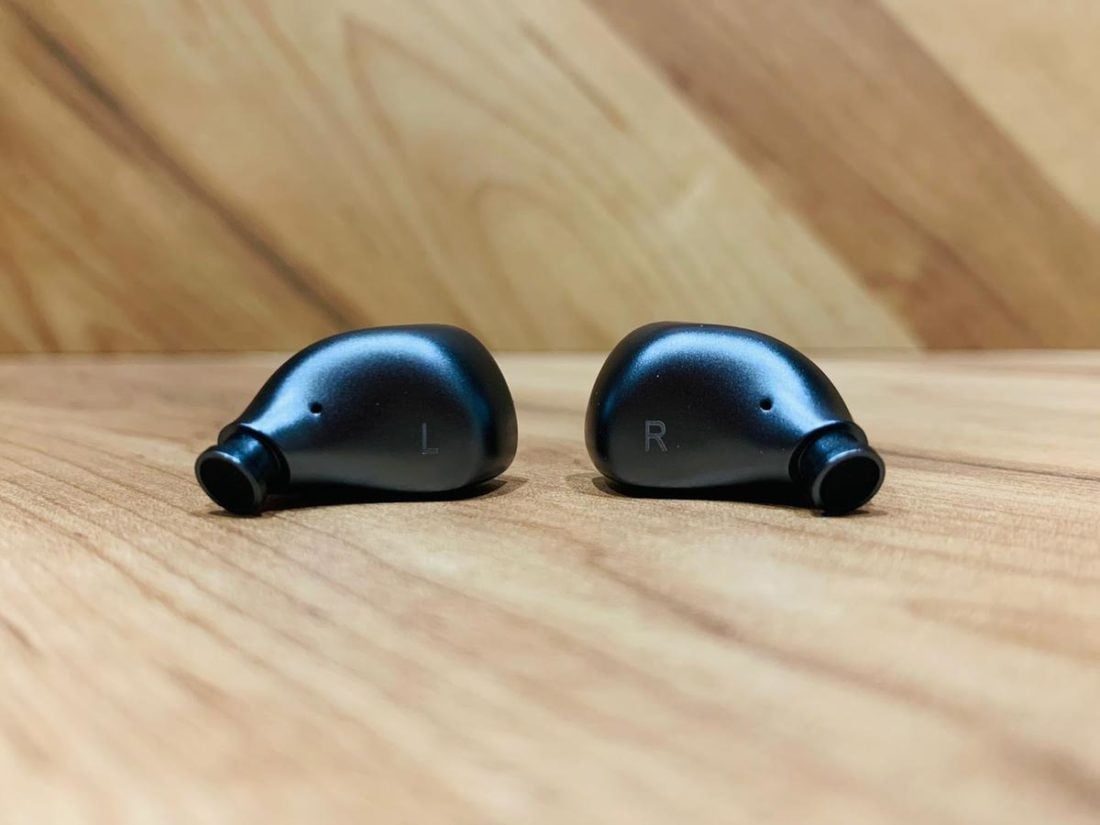
While the Olina do not beat the venerable Oxygen in terms of absolute sonic fidelity, just losing out in technicalities/timbre and less refinement, they reinforce the concept of diminishing returns moving from the budget to the midFI segment. Quite a lot of folks will be happy with something slightly less proficient but for far less money!
Other than the Oxygen, the Olina actually do some technical aspects better than some midFI single DDs like the Moondrop KATO and BQEYZ Autumn. (Note: the KATO have better timbre/tonality and the Autumn have superior soundstage and greater versatility.) Considering the Olina are substantially cheaper, that’s nothing to be sniffed at.
Oxygen killer they are not, but is still a joyous occasion (as per their namesake). The Olina are recommended in my book and I consider them to be a worthwhile budget introductory set. Perhaps only bassheads and the very treble sensitive may find them wanting for the price, but most others should find the Olina to be good all-rounders.
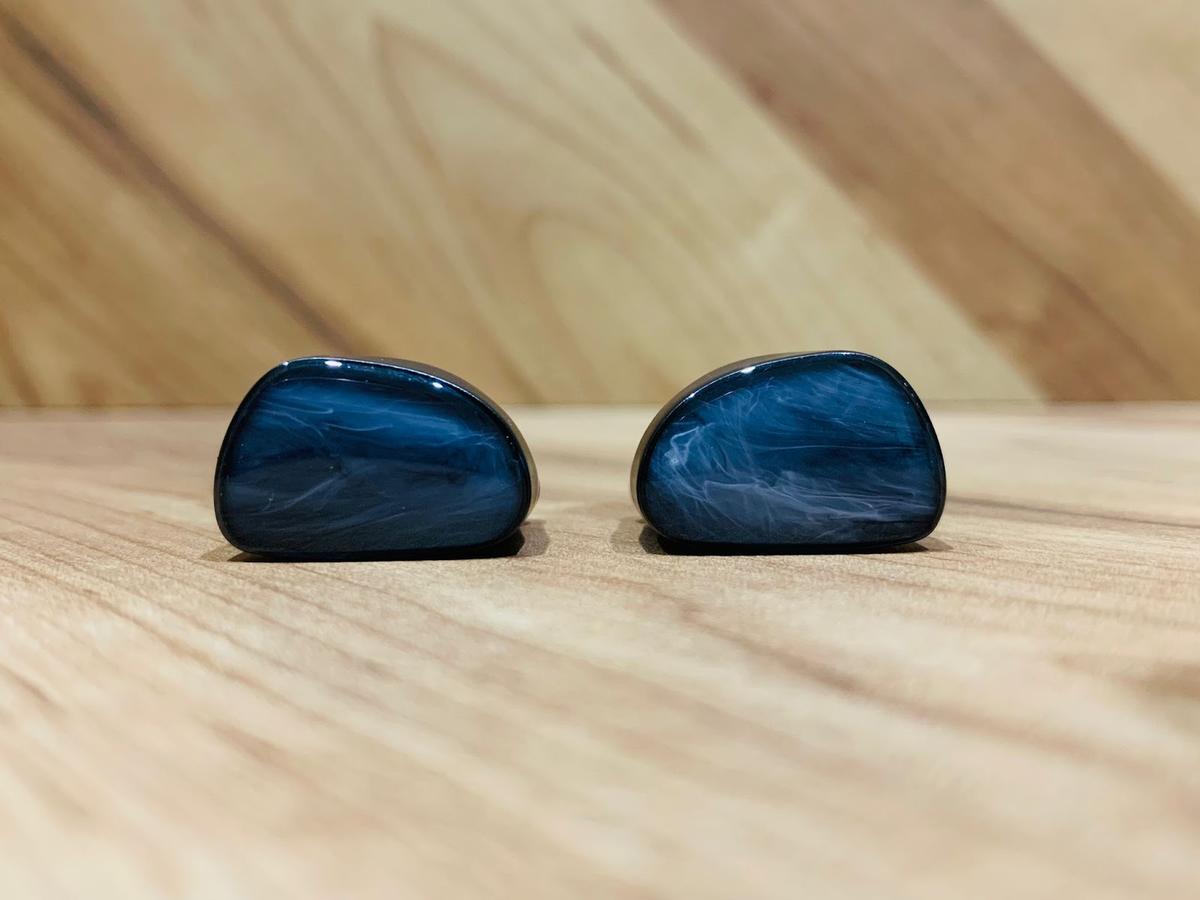
Hi, I really love that blue color of those in your review, is it a special version?
Hi Sir
This Olina is just a regular version, but I think there are variations in the colouring of the shells, some appear more greyish, whereas some are more blue. At least that is what I noticed in the forums. In fact, within the same Olina, the left and right pieces are also a bit different in their design and colouring.
Cheers!
Hi. Which consider the best iem below 400€?
S12, Olina, Oxygen…
Hi Sir
I haven’t tried the S12, but between Oxygen and Olina, Oxygen is definitely more refined, tighter in the bass, better technical performance and timbre, but it is pricier too.
Below $400, the Tanchjim Oxygen, LZ A7 and the Sony XBA N3 are my daily drivers.
1)
Oxygen melds technicalities, timbre and tonality very well, very natural sounding set.
2)
LZ A7 has 10 tuning options via tuning nozzles and switches, so it is ultra versatile, can be neutral to V shaped on-the-go, very technical set, though perhaps not the best timbre.
3)
Sony XBA N3 is an L shaped bassy and warm set, great soundstage and imaging, very non fatiguing and relaxing set. The bass is big and textured, and even though it contains BAs, the timbre is excellent. I think it is not sold any more though, I had to buy my set 2nd hand.
Hope this helps! If you have other suggestions too, would be all ears!
You’ve reviewed the Letshuoer S12 Pro recently & I’m torned between it & the Olina. I’m inclined to purchased the S12 Pro though. Any word of advise?
Hi Sir
These 2 IEMs have their own pros and cons due to the different drivers used.
They are also tuned differently in terms of tonality.
The Olina is more harmanish and “reference” whereas the S12 Pro is more V shaped and more “fun” sounding. The latter have more bass and higher treble extension. In terms of timbre, the Olina is more natural, most planars have a bit of an unnatural timbre due to the very fast transients.
In technicalities, the Olina has a better soundstage, but other areas eg clarity, imaging, instrument separation, micro-detailing, the S12 Pro probably is slightly better.
A lot of folks have an issue with the Olina’s lower treble/upper mids, whereas consumers who are treble-sensitive find the S12 Pro a bit bright in the upper treble region. FWIW, there is a new Olina SE which has been released recently, which tames these regions, and a lot of consumers prefer this tonally compared to the original Olina.
Hi!!
Which iem do you consider better.
Oxygen, Olina, S12…
Hi, Between Olina and Aria, which one has a smaller Shell size(thickness)?
like in image under comparison section of this review.
Hi Sir/Mdm
I have a comparison photo of 8 single Dynamic Driver IEMs in this article: https://www.headphonesty.com/2022/06/review-moondrop-aria-snow-edition/
Look under the “comparisons” tab.
The Olina is slightly longer and has a larger width by a few mm, but it is shorter in height than the Aria by a few mm. Aria’s nozzle is longer.
Good review, which one would you recommend between the olina and the moondrop aria? Mainly for genres such as electronics, rock, pop and swing.
Hi Sir
The Olina might be the better option for those genres that you mentioned. The Aria is more laid back and sounds more analogue, and has weaker technicalities (clarity, instrument separation, soundstage, micro-details, imaging). The Olina is a league or two better in technical performance.
However, the caveat is that the Olina is a bit hot in the treble regions and so it can be fatiguing for treble-sensitive people.
On audio forums, there are folks who paste a second nozzle damper on the Olina’s nozzle (the dampers come inside the packaging) to tame this area and make it less bright. Alternatively, some folks use a Tanchjim Tanya nozzle damper (can be bought separately or it comes with the Tanya packaging) instead of the stock Olina nozzle damper.
It is a reversible and quick job, but I understand some people won’t want to mess around with mods.
Thank you very much for the reply; I will take it into account, keep it up, you are very good reviewers.
Hi! Could you make a comparison between Ikko oh10 and Olina?
Thanks a lot!!!!!!
Hi Sir/Mdm
Thank you for your message!
Generally, I try not to compare hybrids (like OH10) versus single DD types (like Olina), cause the different transducer types have their own pros and cons. Also, OH10 is in a slightly higher price bracket, so it is kind of an apples to oranges comparison as such.
But FWIW, on comparing the two, firstly the OH10 is quite a big IEM, very heavy and I had discomfort using them for longer sessions, which isn’t the case with the Olina. Different strokes for different folks, but comfort is quite high on a priority list for me, as it is no point having something sound heavenly, but you can’t use it for more than a few minutes. YMMV.
In terms of tonality, the OH10 are more V shaped with way more bass extension and quantity, compared to the Harmanish Olina. The OH10’s bass can actually be considered basshead to some, and hence the OH10 does extremely well with bass forward music like EDM, hiphop, whereas the Olina comes off as much lighter in the bass, in comparison.
OH10 is more “fun” sounding as such, compared to the more “reference” Olina.
Continuing on, the OH10 has a more recessed midrange, both are somewhat spicy in the treble, but the Olina is a bit more fatiguing/shouty in the lower treble region due to the perceived lower bass. Vocals are noticeably behind on the OH10 so if one is a vocal lover, the Olina is the better option.
However, due to the excessive brightness on the Olina, if you are treble sensitive, you might wanna consider alternatives, or do a Tanchjim filter mod/double stock filter mod to tame this area.
Timbre is more natural sounding on the Olina. Olina has a tighter bass. Both sets have excellent soundstage, but I think the Olina is a bit more expansive in this department, with slightly better imaging.
They are pretty different sets in tuning, and perhaps may even complement each other!
Hi. Thanks for the Review.
I got my olina the last week. They are already burned in i like the sound, however i have felt them i little bit powerless in the bass area.
It’s a great pair of iems but something is missing.
Can you recomend me some iems more bassy in that range of price?
I Will apreciate it.
Hi Sir
Yes the Olina is not for bassheads. Perhaps there are some slight things you can do to marginally boost the bass – eg use a warmer source, use eartips that increase bass eg Final E black tips, foam tips. Or even use EQ if you are open to it?
The Olina is one of the most technically proficient single DD IEMs at sub $100, and while there are bassier IEMs like the Tin T3 Plus, KBEAR Ormosia, Final E3000, you would be sacrificing the resolution, technicalities and soundstage for the increased bass.
There is an Olina Special Edition that was just released only, it tames the lower treble region (based on graphs), I haven’t heard it yet but maybe we can wait for some first adopter reviews on how is the bass on this Special edition set.